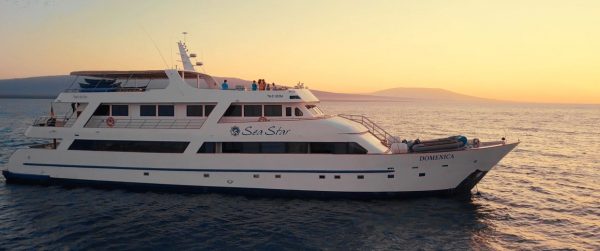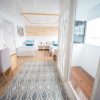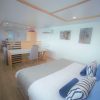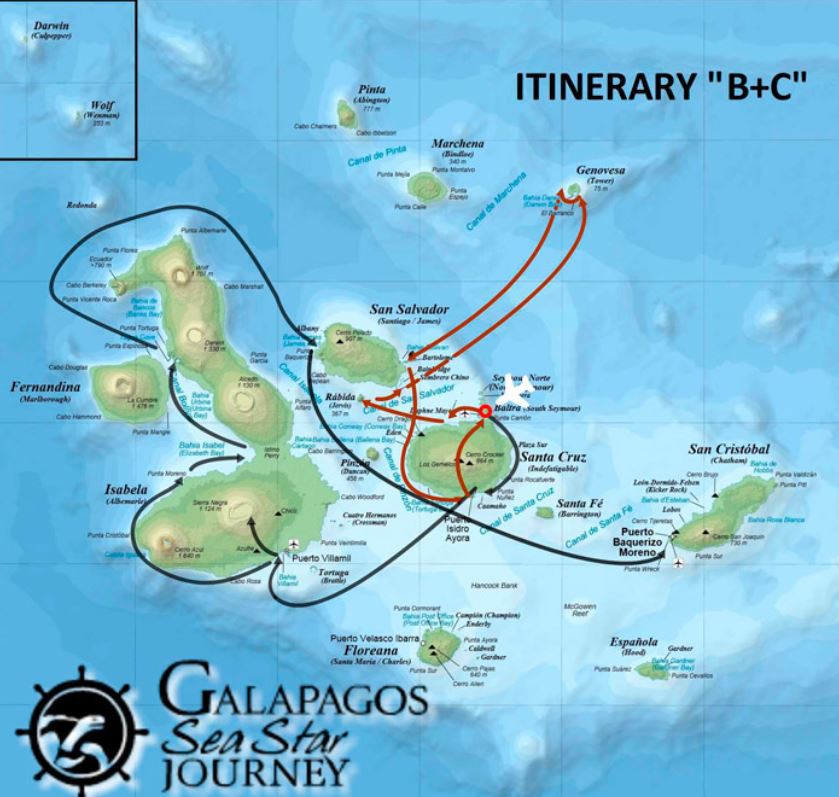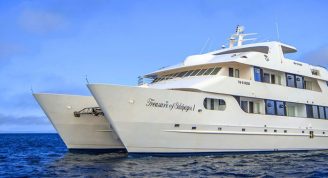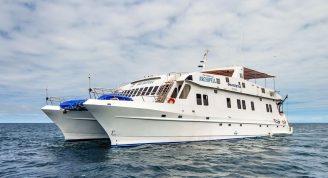Description
For travelers who wish to see a lot more besides the top sites of the western islands of Isabela and Fernandina, this is certainly the best option you can choose as you will have the unique opportunity to visit the marvelous Genovesa Island plus incredible hiking tours and snorkeling in the Marine Reserve around Bartolome, Santiago and Santa Cruz; this cruise has been carefully crafted so you can enjoy a fulfilling voyage.
Trip Name
Sea Star Journey “B+C” Itinerary
Days
10
Overview
Vessel Type: Boutique Yacht (Superior First Class)
Length: 42 m
Passenger Capacity: 16
Built / refurbished: 2011 / 2019
Our Galapagos Cruises combine contemporary design, privacy, and comfort all within the marvelous setting of the Galapagos Islands. The Galapagos Sea Star Journey has a capacity of up to 16 passengers, featuring seven spacious Galapagos Suites of about 270 sq. feet each (approx. 25 m) and one Sea Star Suite of about 375 sq. feet (approx. 35 m) equipped with panoramic windows to enjoy the wonderful landscapes of the islands. These come with a private bathroom, hot/cold water, air conditioning (with independent controls), a minibar and TV. Suites come configured with two twin beds or one double bed, and connected suites are available for families.
Local and International dishes – specially designed by our chef – are served in the cozy atmosphere of our dining room. The Sea Star yacht offers a large solarium with shaded and uncovered areas, two Jacuzzis and comfortable sun loungers. Social areas include a bar, mini-library, and video library as well as a play zone for kids (during family departures). Snorkeling equipment and kayaks are available too without any extra charge.
Galapagos Sea Star Journey complies with local and international safety regulations, and we implement sustainable practices throughout our journey to protect the fragile environment of the Galapagos.
Fine dinning & Cuisine
All meals are included and served in an international style, combining natural and organic ingredients in order to offer a healthy gastronomic experience. In the case that some guest may require a special dish due to food allergies or restrictions, our chefs will be willing to adapt the menu to these requirements if it has been informed previous the trip.
Naturalist Guide
Our certified naturalist guides are top’ranked, speak English, and have extensive experience and knowledge of the Galapagos Island in topics such as wildlife, geology, marine life, biology, and more. At the end of every day, visitors will be able to share their daily experiences and receive the Guide´s briefing for the shore excursions of the next day.
Drinks
On board the passenger will have unlimited water, tea and coffee service. Also, for an extra charge, a Bartender is available for cocktails and soft drinks. Do not forget to ask for our wine exclusive menu, ideal for the dinner or a special moment.
Shore Excursions
All meals, excursions and activities are included. Zodiac rides, nature hikes, snorkeling and kayaking within the Galapagos National Park always experienced with an English speaking naturalist guide.


